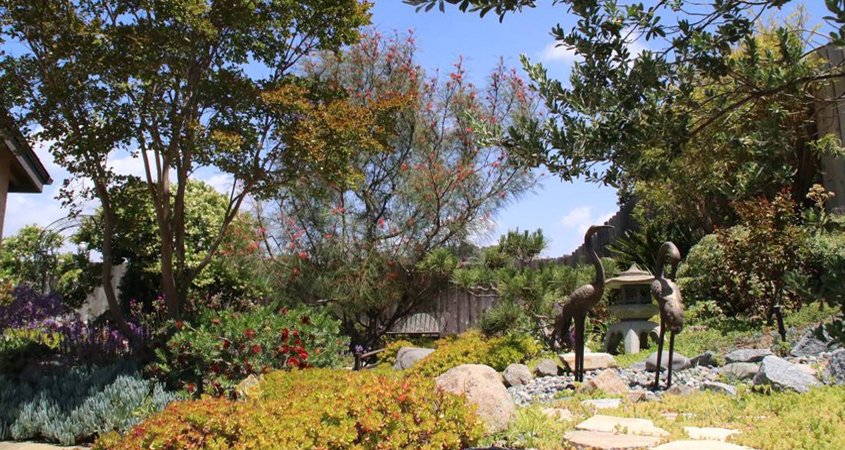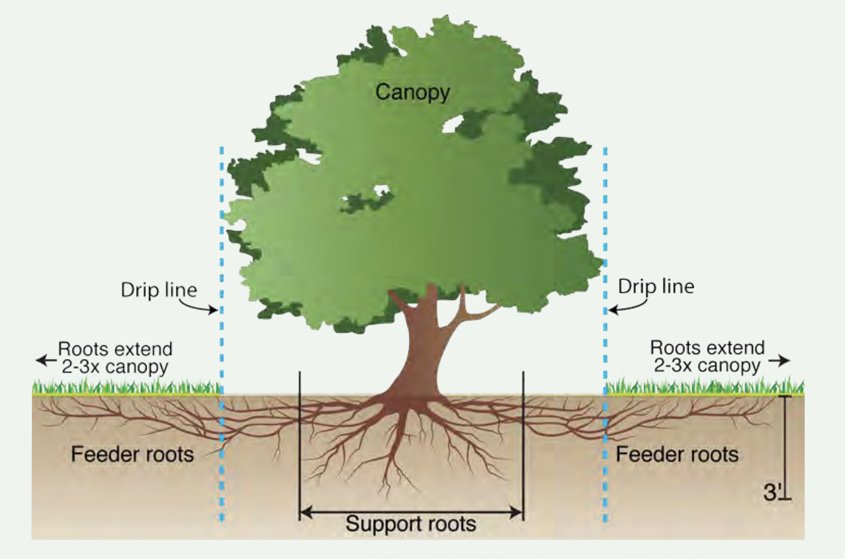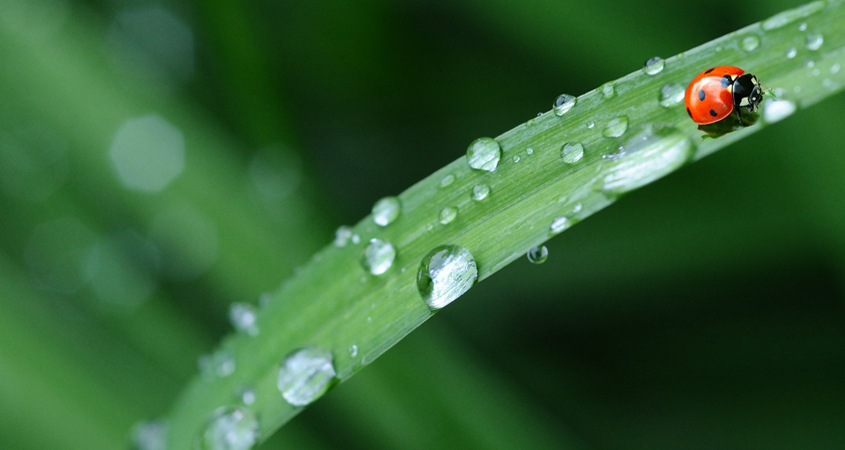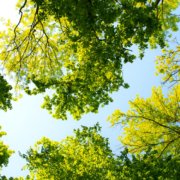Tag Archive for: California drought
Amid California Drought, Santa Clara County’s Water Conservation Isn’t Going Well
One of the largest water districts in the San Francisco Bay Area is falling dramatically short of water conservation goals amid extreme drought conditions across California.
Santa Clara Valley Water declared a water shortage emergency in June with its reservoirs reaching historically low levels, requiring customers to reduce water use by 15% compared with 2019 levels. In July, the district fell short of the goal with residents only reducing water use levels by 6% compared to 2019 levels, according to newly available data first shared by the San Jose Mercury News.
Free, Drought-Tolerant Plants Available to FPUD Customers
The Fallbrook Public Utility District is now accepting applications for customers to receive free, drought-tolerant succulents. Approved applicants will receive the plants, free of charge, to transform their landscape and save water.
State’s Curtailment Orders Draw Lawsuits From Modesto-Area Water Users and San Francisco
The state’s curtailment of river diversions has drawn lawsuits from eight irrigation districts in and near Stanislaus County, along with San Francisco.
The three filings claim that the State Water Resources Control Board exceeded its authority with the Aug. 20 orders. The plaintiffs also said they did not get enough chance beforehand to make their cases for continued diversions.
One suit was filed Sept. 2 by the Modesto, Turlock, Oakdale and South San Joaquin irrigation districts and San Francisco. It involves the Tuolumne and Stanislaus rivers.
Tree Care Tips Preserve Benefits During Drought
Trees are among the most valuable investment in San Diego County’s landscape – including your own waterwise landscaping. Trees stand out as key performers in your landscape design for multiple reasons. No other landscape plant offers greater benefits to your landscape and the greater environment.
Investing in tree maintenance is vital to keep them healthy. As you reassess your landscaping’s irrigation needs during extended periods of drought, allocate sufficient water to your trees, which will in turn provide multiple benefits.
Trees need time to grow and reach maturity. Saving water in the short term during a drought could result in damaged or dead trees, which could take decades to restore. According to the San Diego Regional Urban Forest Council, the cost of watering a mature tree is less than $20 each year. It can cost $1,000 to remove a dead tree. Taking care of your trees during drought ensures a tremendous return on this investment.
Multiple long-term benefits from trees

Healthy trees fight climate change and cool our cities, provide habitat, and improve the health of our neighborhoods. Photo: Kampus Production / Pexels
In the region’s dry and increasingly warming Mediterranean climate, trees help fight climate change. Trees counteract the urban heat island effect, especially in areas dominated by hardscapes such as streets, sidewalks, and building roofs. The evapotranspiration from tree leaves cools the ambient temperature down, much as perspiration lowers a person’s body temperature. Watering your trees also reduces the water needs of plants growing in their shade.
Trees provide habitat for insects, pollinators, birds, and animals – and human beings with their welcoming shade and protection. Placed properly, shade trees can reduce the use of air conditioning from 20% to 50%. The evaporation from a single tree can produce the cooling effect of ten room-size residential air conditioners operating 20 hours a day. California street trees alone save the amount of electricity it would take to air condition 530,000 households every year.
Trees protect your property, and studies show the presence of trees improves property values. Neighborhoods with more trees have lower crime rates. In business districts, trees attract customers. People linger and shop longer when trees are present. Sales rise and benefit the entire economy.
Prevent wildfire risks with healthy trees

Even the strictest drought restrictions allow for watering trees on residential and commercial properties. Photo: Helix Water District
When trees die off due to drought, they become wildfire safety risks in addition to losing their many environmental and economic benefits. While any plant might die off without sufficient water, it may grow back within weeks. Drought stress can make living trees more susceptible to diseases and pests.
Even the strictest drought restrictions allow for watering trees on residential and commercial properties. The preferred method is to use a slow-release method such as a perforated bucket or low-volume non-spray irrigation.
Effective ways to water trees

When watering your trees, water along the dripline below the canopy edge, not at the trunk. Graphic: San Diego Regional Urban Forestry Council
Trees need deep infrequent watering. Once established, once a month in the summer and during months without measurable rainfall is sufficient.
- Newly planted trees: For the first three years, water once weekly with up to five gallons of water.
- Small, established low water trees need only about 20 gallons a month. This is the same amount of water in a single average shower.
- Larger, mature low water trees need up to 200 gallons per month.
- Monitor the soil moisture under your tree and adjust amounts accordingly. You may want to use a soil probe to check at the roots.
- Apply water at the edge of the tree’s canopy, not at the trunk. This is where the roots absorb and bring water into the tree.
Trees create community. They provide inviting and cool areas for recreation and relaxation in our neighborhoods and contribute to playgrounds and parks. San Diego enjoys a perfect example right in the heart of the city. One of our greatest civic attractions is Balboa Park, full of beautiful trees planted by visionaries like Kate Sessions a century ago.
Find additional advice from the San Diego Regional Urban Forests Council on tree care and drought.
California Drought: Santa Clara County Residents Failing to Meet Water Conservation Goals
On June 9, as California’s historic drought deepened, the largest water agency in Santa Clara County declared a drought emergency and asked the county’s 2 million residents to cut water use by 15% from 2019 levels to preserve dwindling supplies.
‘Deadbeat Dams’ and Their Impact on Cold-Water Ecosystems
As drought-stricken California considers constructing new dams, a new study finds that many of the state’s existing structures— despite efforts to prioritize healthy water temperatures— are failing the cold-water ecosystems that depend on them.
Bank Your Water Savings for the Future
Using landscape irrigation efficiently can significantly reduce overall household water consumption while leaving adequate water in the ground to cover your plants’ needs. One tool that can help is to build up your water savings when rainfall is available.
Approximately half of the water spent by average California homes is used outdoors, mostly for irrigation. Unfortunately, up to half of commercial and residential irrigation water is squandered by evaporation, wind, improper system design, or overwatering, according to the U.S. Environmental Protection Agency.
During the winter in metropolitan San Diego County, healthy soil can absorb water in surprisingly large quantities to be released slowly to plants as they use it during drier months – like using a savings account to pay for expenses over time.
There haven’t been many opportunities in recent years to do so. However, whenever it is possible, there is no need to use the residential water supply on your landscaping when Mother Nature can bank water savings deposits for you.
Balance your water bank account

Maximize your landscaping soil’s ability to retain and save rainfall and irrigation for drier days by creating a water savings account. Photo: D. Douk/Creative Commons
Water entering the soil – whether as rain or as irrigation – is like a deposit into a soil checking account.
By keeping track of those transactions of water in and water out, it is possible to know how much water in the soil “reservoir” is available in the landscape at any given time for the plants to access.
The initial soil bank balance is determined by direct observation or is assessed after a thorough wetting of the soil by irrigation or winter rains. Every day, plants take small amounts of water from the soil. Rain and irrigation fill up the water bank again. The trick is to make sure this “account” does not get overdrawn.
How can you tell when the account is depleted? Smart irrigation controllers and landscape professionals can calculate this for you. You can also rely on a soil probe, or even testing the landscape by feeling the soil surface with your fingers.
When oxygen and water are balanced in the soil, the amount of water lost through evapotranspiration is similar to paying fees on your savings account. Shading the soil surface with plant materials and mulch protects water in the soil by slowing evapotranspiration and leaving more water in your soil’s account.
This article is part of a year-long series inspired by the 71-page Sustainable Landscapes Program guidebook. The Water Authority and its partners also offer other great resources for landscaping upgrades, including free WaterSmart classes at WaterSmartSD.org.
What is the Drought’s Effect on Western U.S. Water Resources?
Droughts in the Western U.S. make headlines worldwide, posing particular challenges for people living and working in the affected regions. Here’s a close examination of the effects of drought on available water resources.
The Effects of California Drought Vary by Location
People regularly discuss California when talking about long-term drought, particularly because the state often experiences prolonged water shortages. Some experts believe that rather than going through brief non-drought periods, the state is actually enduring a so-called emerging megadrought and has been for the last two decades.
San Diego County, Water Authority Partner on Efficiency Rebates
Residents and businesses in unincorporated areas of San Diego County are eligible for increased water-use efficiency rebates under a partnership announced Aug. 17 between the county’s Watershed Protection Program and the San Diego County Water Authority.
The program could save money for residential, commercial and agricultural customers who make landscape upgrades designed to improve the region’s climate resilience and reduce the flow of pollutants into waterways.
“Drought conditions across the west are a reminder of the importance of water-efficiency upgrades, and these rebates offer a great opportunity to get involved,” said Kelley Gage, director of water resources for the water authority. “With a WaterSmart approach, we can reduce water-use and maintain climate-friendly landscapes that help sustain our quality of life in San Diego County.”




